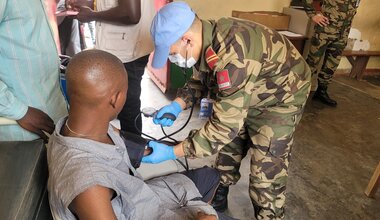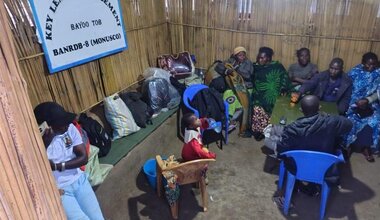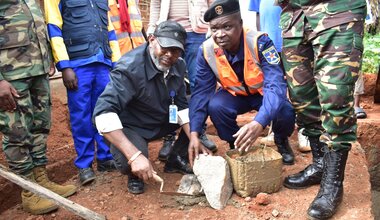General Chander Prakash explains MONUSCO’s contingency plan for the next six months
Photo: Biliamino Alao/MONUSCO
The Force Commander of the United Nations Stabilization Mission in the Democratic Republic of Congo (MONUSCO), Lt. Gen. Chander Prakash, was in Bukavu, South Kivu province, for two days starting on 13 September 2011. While there, he met with brigade and sector commanders to fine tune the Force's operational plans for the coming six months. He also met with the commander of the 10th military region of the National Armed Forces (FARDC), General Pacifique Masunzu, and the commander of Amani Leo operations, Colonel Delphin Kahimbi, to brief them on MONUSCO's plans to provide security during the elections.
Question: General Prakash, you are MONUSCO's Force Commander. Can you tell us exactly why you are here in South Kivu
Force Commander: The basic purpose of my visit is to meet with all my brigade and sector commanders, to do a security assessment based on the latest information available concerning eastern DRC, and to prepare ourselves for the coming six months.
Q: We understand also that your visit is about contingency plan for the elections. So, what are the main objectives of this plan?
Force Commander: The main objective of the contingency plan is to prepare ourselves, and be ready for any situation that may or may not occur in the next six months. As you know, our resources are limited, and there are challenges such as inaccessibility to various areas in the country; there are challenges related to the lack of infrastructure in some parts of the country. There are also challenges related to limited administrative support. So we studied the various situations that we may be confronted with, elaborated strategies on how best to react to unforeseen emerging situations, the backbone of all this being the protection of civilians, strictly in accordance with the new mandate, as you know, the 1991 [UN Resolution].
Q: Will the implementation of this plan also take into account the deployment and capacity of the FARDC in the province?
Force Commander: Yes, it definitely takes into account the current deployment of the FARDC after the first phase of restructuring and reorganization. We are also looking at the resources that are likely to be available after the second phase training of the FARDC would have been completed. As you know, I had a discussion with the Commander of Operation Amani Leo, Col. Kahimbi, and also the 10th military region Commander, Gen. Masunzu, under whom the reorganization of the national forces is taking place. We are working jointly and we are trying to complement each other's strengths so that there is synergy that will enable both forces perform better.
Q: You also met with General Masunzu of the 10th military region today, did you also talk about the security situation prevailing now in South-Kivu?
Force Commander: With both [officers] of the FARDC, Col Kahimbi and Gen. Masunzu we made an assessment of the security situation that is prevailing in South Kivu. It appears that the situation is relatively calm, except in certain pockets which we are examining in detail and we have all the strategy to deal with various armed groups, particularly the Mai Mai Yakutumba so that things are put right.
Alain Likota/ MONUSCO
 UN
UN United Nations Peacekeeping
United Nations Peacekeeping




